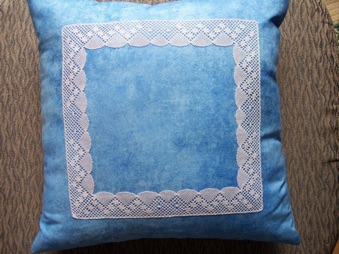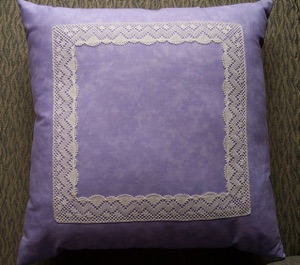The Art of Bobbin Lace
First traces of bobbin lace are found in the beginning of the 15th century in Italy and in the Netherlands. Soon this new art spread to France and from there all over Europe. During the 17th and 18th centuries bobbin lace was very fashionable and during the Baroque and Rococo periods masterpieces of bobbin lace had been produced. In the 19th century machines had been developed that could produce lace much faster and cheaper. However, the art of lace making was never totally forgotten. Since the 1970s the art is going through a revival period. Very few people are making lace by hand for sale. But many more are learning the techniques of bobbin lace making in schools and courses. They find this new hobby a rewarding and challenging pastime.
Bobbin lace is very fine, precise and intricate work. Although there are only two basic stitches in bobbin lace, there is a great variety of different bobbin laces which are distinguishable by their patterns. There are Flanders Lace, Point de Paris, Binche, Net Lace, Valencienne, Honiton, Cluny, Torchon, Bucks Point and many more. The bobbins too, which serve as handles to manipulate the threads, have various forms in different countries or regions.
How is it Done?
Bobbin Lace is made on a pillow or cushion which is tightly stuffed with straw or sea grass. The pillow is for sticking pins into. The design of a lace piece is drawn on graph paper in the form of pencil dots. The dots represent holes in the “pricking.” The pattern for a lace project is called a pricking because holes are pricked with a needle into a stiff cardboard. The accurate placing of these holes is very important since pins will pass through them to secure the stitches that are made to build up the lace. If the pins are badly placed, or if - of too much use - the pricking becomes worn, the pin holes stretched, or if they are running together, the lace will become distorted.
Torchon ( french for duster or rag) is a strong coarse lace made of flax threads. Narrow edgings and insertions were produced using simple geometric designs to embellish linen and underwear. Torchon was inexpensive and commercially produced in many European countries. In the early twentieth century machines were developed that could produce near-perfect copies of Torchon. This drastically reduced the market for hand-made lace.
Bucks Point Lace shows representational designs which may be a simple shape or an elaborate floral pattern worked on a fine hexagonal net background. Historically there were only about 200 patterns designed that were used commercially. Professional lace makers knew and worked only one or two patterns. This ensured the production of a large quantity of lace quickly and accurately. Creating new designs is time consuming. Today as lace making becomes more of an art than a competitive trade, lace artists can either use the old traditional patterns or they can create new designs. The emphasis now lies more in perfection. The need for speed no longer exists.
I am incorporating elements of Torchon and Bucks Point into my bobbin lace designs which may be traditional or contemporary in style. My interest in small things eventually led me to design miniature lace for doll houses. Especially Torchon is suitable for these mini designs. Because it is a geometrical lace the design can be drawn on graph paper in very small scale.
Inge at work
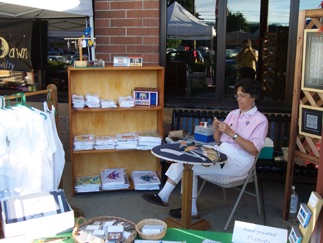
The tools of the trade. The work piece is emerging at the top of the beige card board. The pins determine the position of the stitches. The bobbins at the bottom of the picture are used to manipulate the thread.
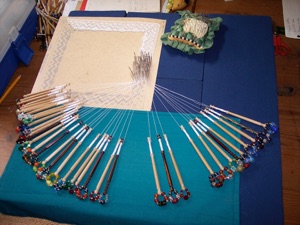
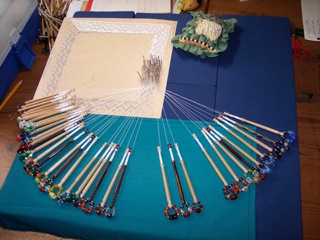
The finished product : The bobbin lace piece is decorating a pillow case.
